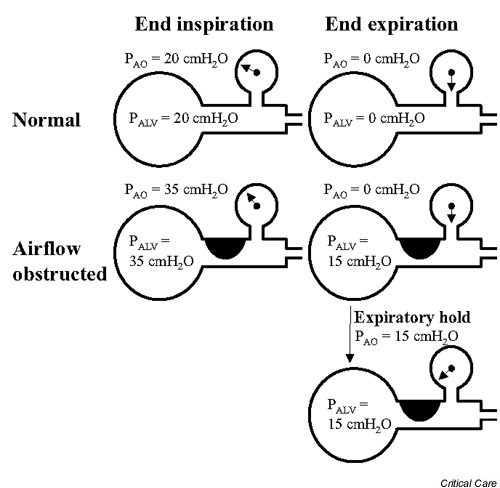Figure 6.

Measurement of intrinsic positive end-expiratory pressure. Intrinsic positive end-expiratory pressure is the lowest average alveolar pressure achieved during the respiratory cycle and is obtained by an end-expiratory hold manoeuvre. In the non-obstructed patient, alveolar pressure (PALV) equals pressure at the airway opening (PAO) both at end inspiration and end expiration. In the severely obstructed patient, PALV may increase because of air trapping, and at end expiration PALV does not equal PAO. If an expiratory hold manoeuvre is performed, PAO will rise, reflecting the degree of lung hyperinflation. Published with permission from Principles of Critical Care [69].
